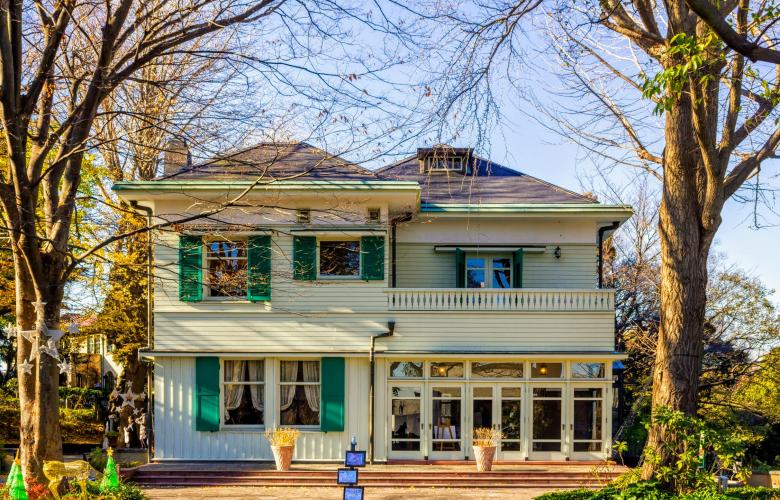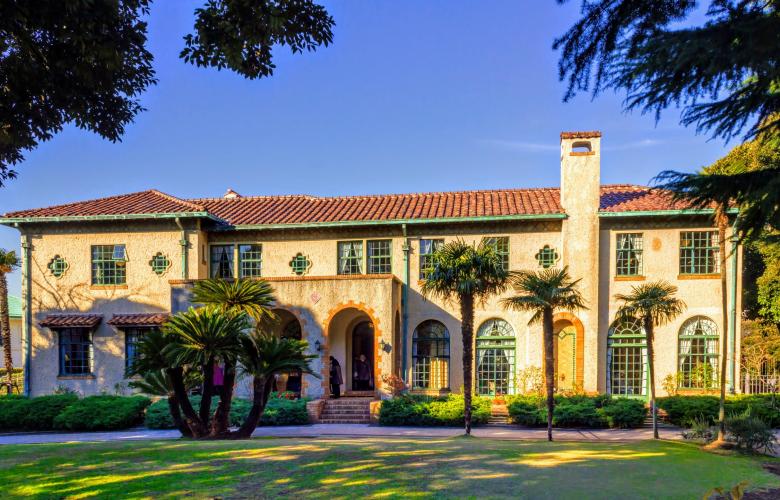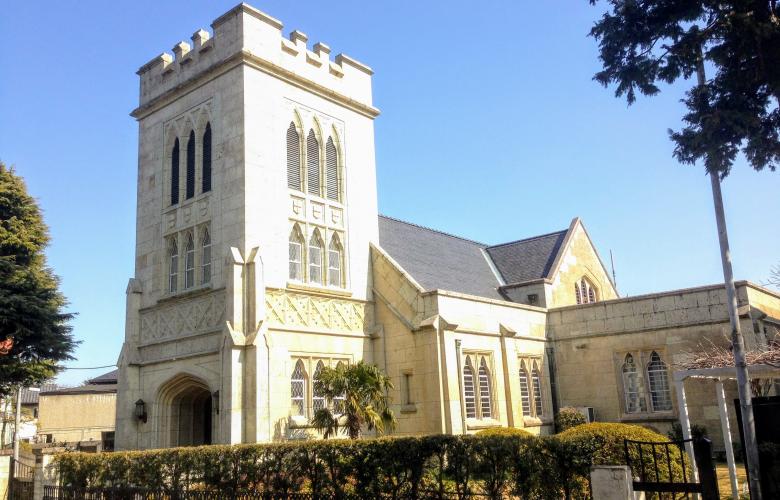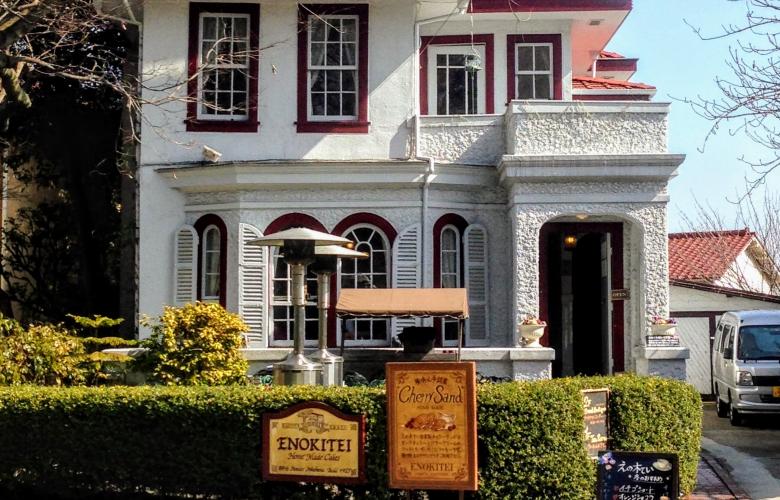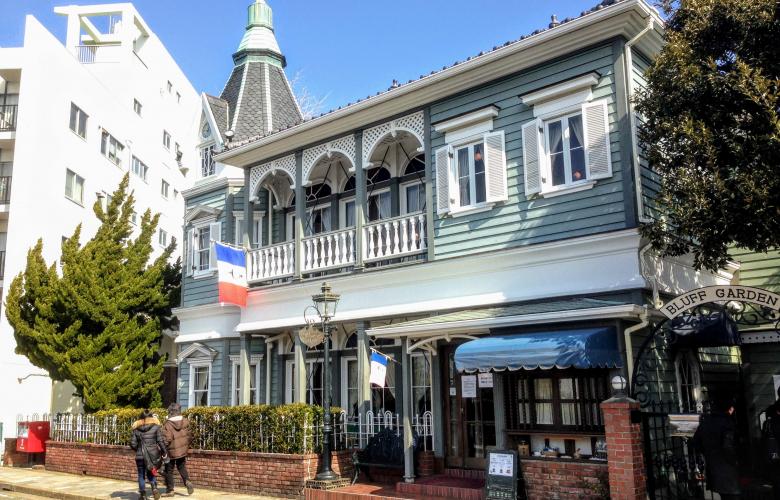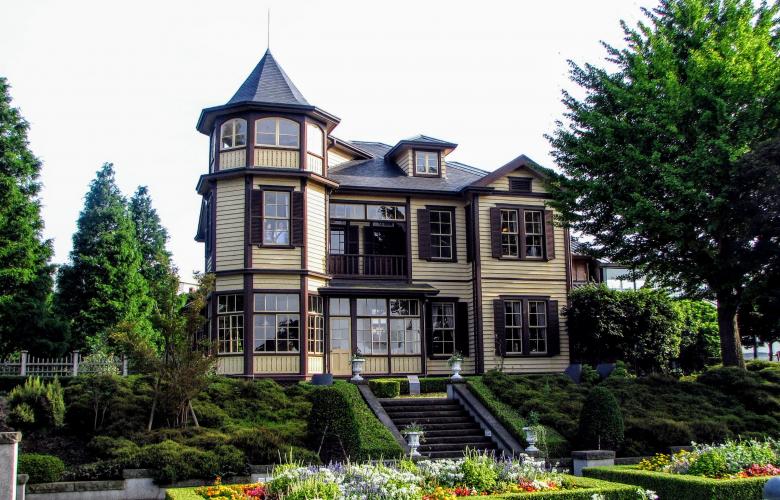With views of downtown Yokohama, the area of Yamate was transformed into a wealthy, westernised residential district with unique architecture — some of which remains today. Following the designation of Kanagawa as an open port in 1858, Yokohama port was formally opened in 1859 and soon became a trade center for raw silk and technologies. As the foreign population increased, the residential area stretched from Kannai to claim Yamate — originally home to a military garrison plagued with health outbreaks. Unfortunately, many of the earliest residences were lost in the 1923 Great Kanto Earthquake, but the houses standing today were either re-built, moved from elsewhere or built soon after by European architects, leading to interesting combinations and even wider architectural history.
While it remains a largely residential area, there are now parks and gardens as well as museums about the area's development, so a walking tour of the properties has become a popular afternoon out in Yokohama. There is an official walking-tour map and a suggested route to take in some of the most famous residences. In response to the growing interest, some buildings have been renovated and opened to the public so the influence can be studied from an interior-design perspective too.
One of those properties is the Diplomat's House, built in 1910 for Sadatsuchi Uchida, a prominent diplomat who travelled extensively. Designed by American architect James McDonald Gardiner, the house is a strong example of the Victorian style which was popular in the US during the 19th century. The house was not built in Yamate however — it was transported from Shibuya when it was donated to the area by Uchida's granddaughter in 1995 in the hope it would be preserved. The building is free to enter and offers an insight into a space designed for living, but also entertaining in a truly Westernised style.
As well as American-Victorian, there are a series of Spanish-style buildings by the architect J. H Morgan who created courtyards and lent a taste of the Mediterranean to his residences. One of the most well-known is Berrick Hall — the largest pre-war building in Yamate and originally the home of British businessman B. R. Berrick. Bluff No. 111 is also one of Morgan's designs and was created for a Mr. Raffin — it looks down into the Rose Garden of the park and is beautiful during the blooming season as well as having a rose-themed tearoom.
Bluff No. 234 is unusual in that it is one of the few multi-residency properties in the area and now features a panel display about the Yamate area on the ground floor. Built in 1927 to accommodate foreigners who had lost their homes in the Great Kanto Earthquake, it had four apartments and has one of the most impressive facades. Another popular stop on the route is the Ehrisman residence which was designed by Czech-American architect Antonin Raymond, with the influence of Frank Lloyd Wright clearly visible.
One of the most notably Western elements of the area is Christ Church — a third-time replacement of a church that began as the Garrison church in the 1860s until being re-built by architect Josiah Conder in 1901 using traditional redbrick imported from Glasgow. Unfortunately, it too was damaged in the quake and its replacement — built in 1931 — was damaged during WW2 as well as a fire in 2005. It is still standing tall today though with both Japanese- and English-language Anglican congregations served by two rectors.
Surprisingly, this church is not the location of the Yokohama Foreign General Cemetery, which was founded in a section of the grounds of the Zotokuin Temple. When a sailor on one of Commodore Perry's ships died on the way to Japan, the captain requested a burial site overlooking the sea for the sailor and any reputable foreigners who may die in Japan. Eventually, it became difficult to separate the Foreign and Japanese spaces in the graveyard, so the Japanese section was relocated and the Zotokuin Temple was relocated following the Great Kanto Earthquake. Now, over 5,000 people are laid to rest here including over 40 nationalities and many famous individuals, although many original gravestones and the records were lost in earthquake damage too. In the gatehouse is a small museum with a map of the notable graves and information about those within.
The parks are what makes this area such a popular residential spot, and the Minato-no-Mieru Oka (meaning 'Harbour View Park') was built on the site of William Copeland's original spring valley brewery which was the first large beer-production facility in Japan. Filled with rose gardens and Western-style gardens including the Italian Garden, it is easy to imagine dignitaries of times gone by strolling through on a spring day.
A number of museums in the area are housed in traditional buildings, most notably the Yamate Museum. Now part of a local restaurant, it is in the last remaining example of one of the original wooden structures, having survived the earthquake and bombings. The Museum of Tennis traces the development of the sport following its introduction in 1876, just two years after the first games of lawn tennis were played in England. The most interesting museum, however, may be the Iwasaki Museum, in what was once the Gaiety Theater — originally built on the site in 1885. As the first Western-style theater it was host to some of the first performances of Shakespeare as well as foreign musicians but was destroyed in 1923. In 1980, however, it was reconstructed in its former image using photographs and plans of the original design by French architect Paul Sarda.
A stroll through The Bluff offers a unique chance to see the original efforts of foreigners making their mark in Japan; with traditional homes and imported styles by inspired architects, it is a glimpse into the lives of those who navigated life in an unknown Japan.
By Lily Crossley-Baxter
Similar to this:
Making a house a (typical) home in Japan
Weird and wonderful: Japan's unconventional houses
Yokohama Apartment: A unique city residency space in Japan

